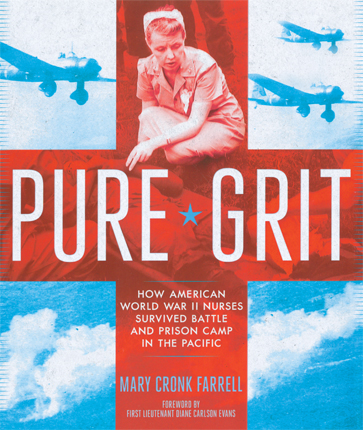Full Text Reviews: Booklist - 02/15/2014 *Starred Review* Farrell chronicles the harrowing story of U.S. Army and Navy nurses based in the Philippines during WWII. After working under enemy fire, they became prisoners of war in two Japanese prison camps, where they continued to nurse soldiers and other captives. As time went on, severe malnutrition and lack of medicine left all the prisoners vulnerable to serious diseases. Still, the women bonded, supporting each other during the years before their release in 1945. The nurses’ return to civilian life was hampered by an unsupportive military and what we now recognize as post-traumatic stress disorder. The first official recognition of their service came in 1983, after many had died. Farrell offers a thoroughly researched account encompassing the experiences of 67 American nurses held as POWs in the Philippines. Well-chosen quotes from interviews, personal accounts, and articles bring their voices into the story, while the many period photos offer intriguing glimpses of the war, the camps, and the women’s later lives. At times the narrative is nearly overwhelmed by the sheer number of experiences recorded and women profiled. But in the end, the details of many nurses’ individual trials combine to form a memorable portrayal of their shared experience, one that will emotionally impact readers. - Copyright 2014 Booklist. Bulletin for the Center... - 04/01/2014 The war was raging in Europe, but the Pacific region was still calm-at least in public perception-and a posting on the island of Luzon was a plum assignment for military nurses, with its gorgeous terrain, comfortable quarters, light duty, lavish social life: paradise with a paycheck. Then came Pearl Harbor and in a flash the Japanese were moving through the Pacific, the Allies were infamously backed into Bataan and onto the tiny island of Corregidor, General MacArthur had decamped to Australia, and nurses and their gravely wounded patients were taken captive and herded off to internment camps. Farrell tells the gripping story of the nurses’ three year ordeal on the college grounds of Santo Tomas in Manila and at the inland encampment of Los Baños at Laguna de Bay, highlighting their attempts to provide the best medical care possible with few or no supplies, and to keep up their own physical strength and morale as starvation set in. Interviews and memoirs supply plenty of primary source information on which this title is based, and a wealth of photographs, as well as a pair of useful maps, supplements the text. Although the discussion of the Japanese military advance is flag-wavingly pro-American, Farrell tempers the narration with a discussion of how the popular press demonized the captors beyond their actual transgressions. This valuable account shifts the focus from World War II nurses as “angels of mercy” to POWs, and replays the rout at Bataan with women rather than men in the starring roles. End matter comprises a glossary, index, source notes, bibliography, and complete list of nurses in service in the Philippines at the time of the invasion. EB - Copyright 2014 The Board of Trustees of the University of Illinois. School Library Journal - 04/01/2014 Gr 7 Up—This well-researched volume tells the story of the army and navy nurses who were stationed in the Philippines during World War II. The day after the attack on Pearl Harbor, the Japanese began bombing the Philippines. The 79 nurses serving there came from different backgrounds: some longed for an escape from farm life, while others sought adventure. All wanted to find meaningful work caring for others. During the bombardment, their subsequent retreat and, finally, their imprisonment by the Japanese, the nurses never stopped taking care of those around them. After months of near starvation, they were finally liberated by American forces in 1945. Yet even when the nurses arrived home, their troubles were not over. Many had difficulty readjusting to life at home; their experiences just didn't fit the paradigm of women's lives in the mid-20th century. As part of her research, Farrell interviewed the last surviving nurse, plus the children of many of the others, and the text is full of primary source documentation. This adds rich detail to make the circumstances all the more real, whether they are the injuries the nurses treated or the horrific conditions in the prison camps. In addition to photographs and helpful maps, the page layouts include facsimiles of the nurses' letters and diaries. Young readers who enjoyed Tanya Lee Stone's Almost Astronauts: 13 Women Who Dared to Dream will also appreciate this story of courageous women whose story was nearly forgotten.—Jackie Partch, Multnomah County Library, Portland, OR - Copyright 2014 Publishers Weekly, Library Journal and/or School Library Journal used with permission. Loading...
|




